The topic of the debut master class "Kosya Beyk - a terrible beast! Make a easily complex detail! " One of the ways to prepare oblique bay to work.
Masters of our club share their experience and developments! We present to your attention the workshop of the professional, designer and an interesting master Ira Bortnik.
Little accession from the author :)
In general, correctly and neatly prepared faces - the key to convenient and rapid edging of our product with you.
According to the comments to many MK, I realized that the problem of oblique faucet for many masters was, there is and remains one of the most difficult and complex.
In this master class, I want to show how to make oblique beaks in two additions, when one cut outdoor, and the second is already with a fold, fully prepared for further processing on your hands or a typewriter.
I will do plain without special devices, but there will be many professional tricks in the master class.
Also, before the start of the master class I want to explain some things that someone may seem unusual.
First, in the port of the porter habit, the ironing table is a worker - where Ironing there and Crow.
Secondly, it began to sew a long time ago, when no one was heard about special rules and special knives. The habits are great, so I use the usual ruler, scissors, coal, chalk or soap. I am so comfortable and faster.
Thirdly, not everyone has the opportunity to purchase special tools. Therefore, I decided to show how the oblique beyk can be made, using only the most common, familiar and, we can say, with prickly tools.
Preparing materials and tools.
The cloth. We will need a piece of finishing fabric, from which you plan to cut a bay. The width of the piece of which I cried Baik was 50 cm, with a width of the fabric 110 cm
Instruments.
Long line. I have a meter.
Short ruler or square.
Chalk or pasture. If you have a light fabric, you can use all kinds of fabric markers.
Sheet of paper A4, notebook or leaf for entries.
List from a magazine with a program, newspapers or tracing. Who has what is at hand. Office paper is not suitable - fat.
Mat for a patchwork as a working surface if you are used to work on it.
Desktop.
Sewing machine.
Sewing threads.
Scissors.
Iron.
We start work.
Croa
1) Catching a piece of fabric from which we plan to make oblique beyk.
In general, they are black, approximately at an angle of 45 degrees to the equity thread. But it is possible to 40, and 50 degrees. This is not fundamentally.
I have a small piece of finishing fabric under Baik. The width of the Beach in the Call of 6 cm, it means that the first line also measured 6 cm from it
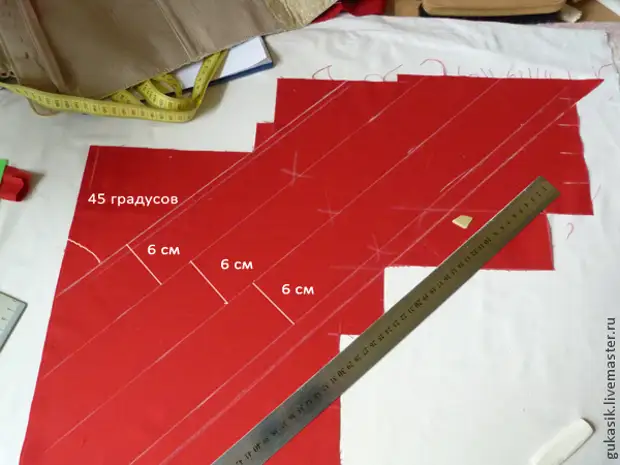
2) Now we need to place sections of 45 degrees.
Professional trick. For an angle of 45 degrees, I take a regular sheet of paper A4 or a small leaflet for notes and fold from one corner. That's how in the photo. If you have a sheet of paper and not torn, then when folding, you will always have an angle of 45 degrees
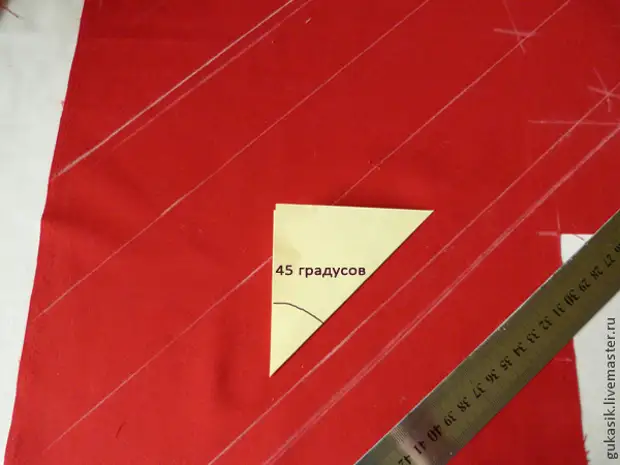
3) I draw all the corners in this way.
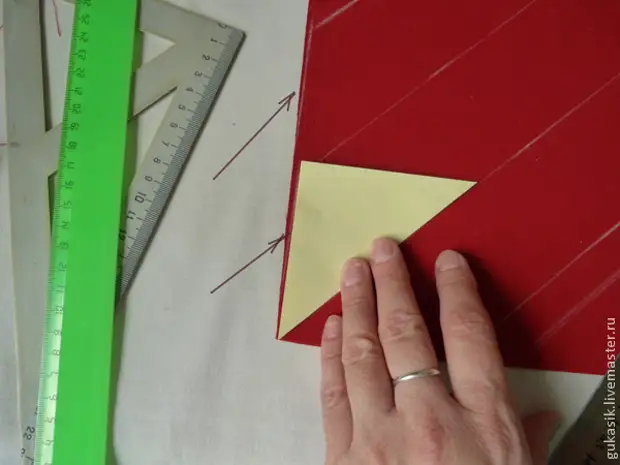
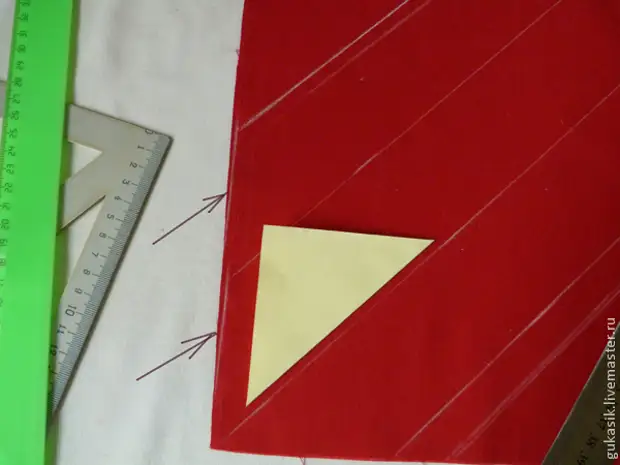
Professional trick. In order not to be confused while sharping, try to draw all the corners in one direction (I just have two angle in different directions, since the fabric was very small; as a result, Beeke turned out about 90 cm long).
4) Cut our stripes. That's what we did
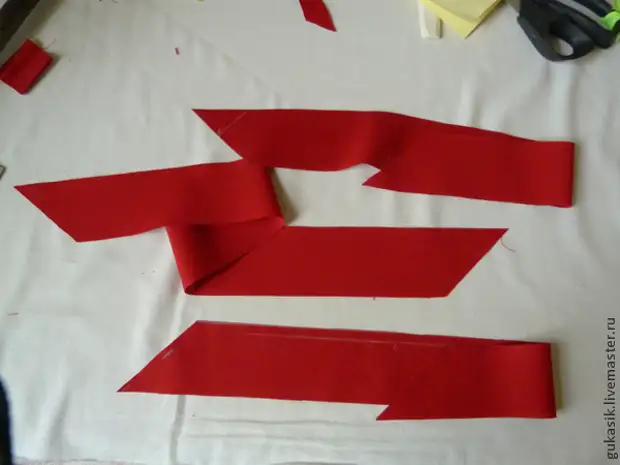
5) We rock pins, how to connect angles - gently and carefully.
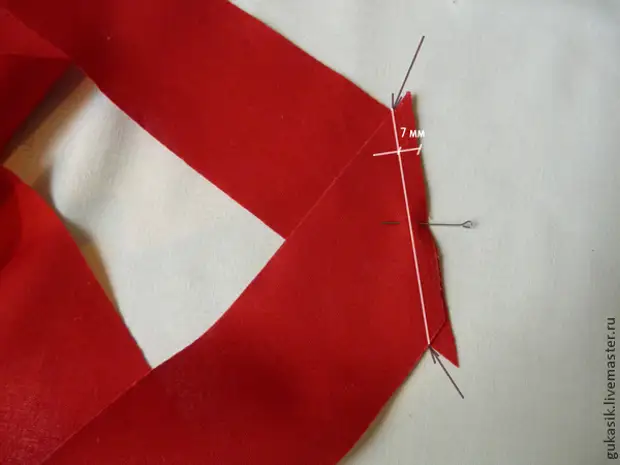
6) We spoke all the seams and cook a piece of newspaper or tracing (who has something at hand).
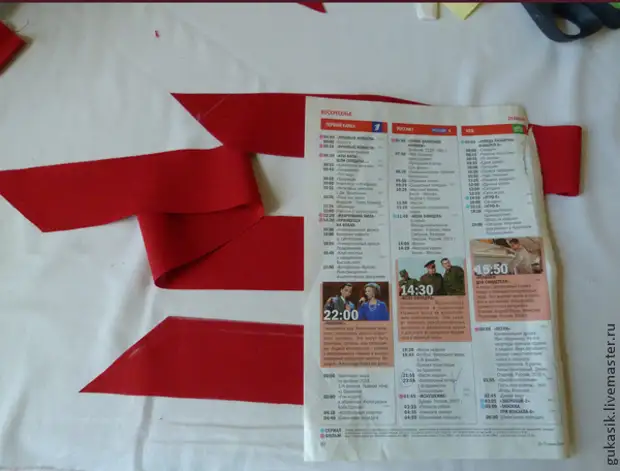
Professional cunning and a slight retreat.
Why do we need a list from magazine or tracing?
Let's look at our car carefully.
See the white arrow? In all household sewing machines in the needle plate, the hole is wide, specifically under 1001 figured line, zig-knocked, loops, etc., when the needle goes to the right and left.
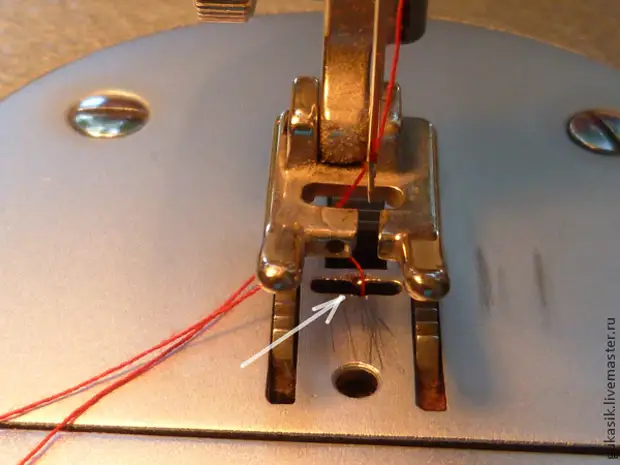
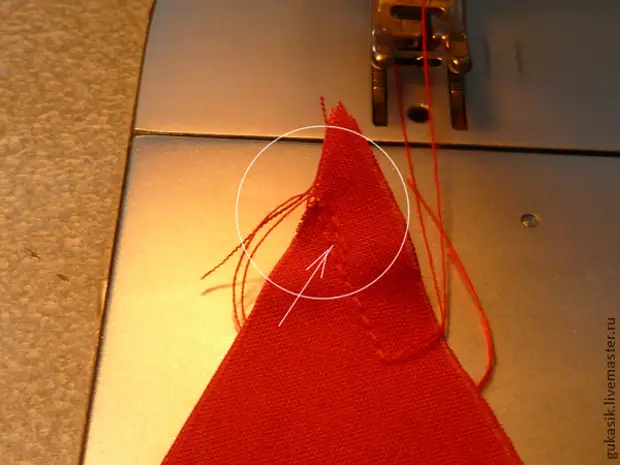
For doubting, yes, why do we need these tricks, I will say - the quality of the edge or cut, treated with baker, depends not only on skillful hands, but also from the quality of preparation itself. If the scaffolding curves, the lines of the roar and do not fall into the other, then this is an extra and completely unnecessary thickness that does not go anywhere, and the quality of edging of the finished thing will not be the best.
Here, just, an example of such a line:
The cunning is that we will overtake the seams, putting the bay sections on a sheet of paper.
This method also works great when you are abandoned with a fine fabric. In this case, the machine will not climb oblique and sharp corners into the hole of the needle plate, the needle will not fade and the rake will be well pull at the very beginning of the line, and not sort out the teeth on the void. I have, for example, cotton for patchwork, sufficiently dense fabric. And if you make a fairy from thin cotton, Sitchik, do not let the god of chiffon or something like something. Then the sewing way on paper to help you.
Machine work
7) We put the needle exactly in the intersection of corners and begin to negotiate the seam.
Stitch length put 2-2, 5 mm.
For the lines are enough 2-3 stitches.
8) This is such a smooth line you should get. With smooth lines at the beginning and at the end.
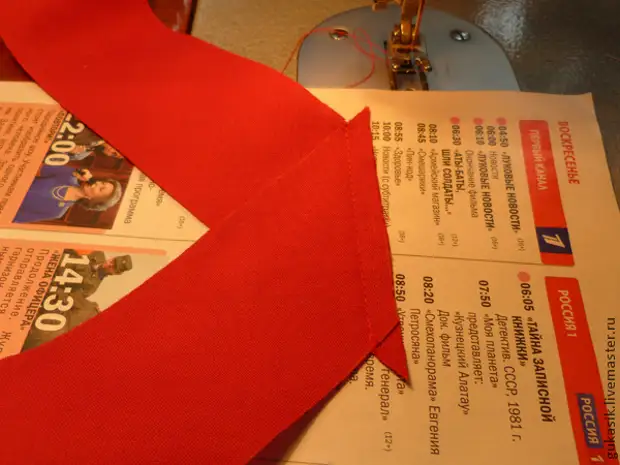
9) With an inside, we also have everything smoothly and beautiful. Gently tear off the newspaper or tracing.
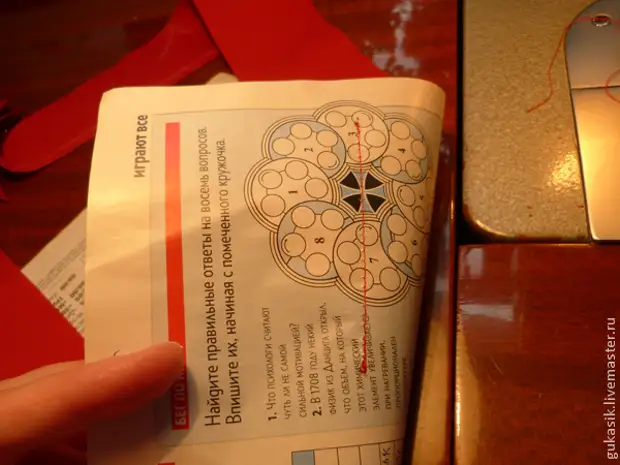
10) If pieces of paper remained in the scores, then we carefully remove excess paper.
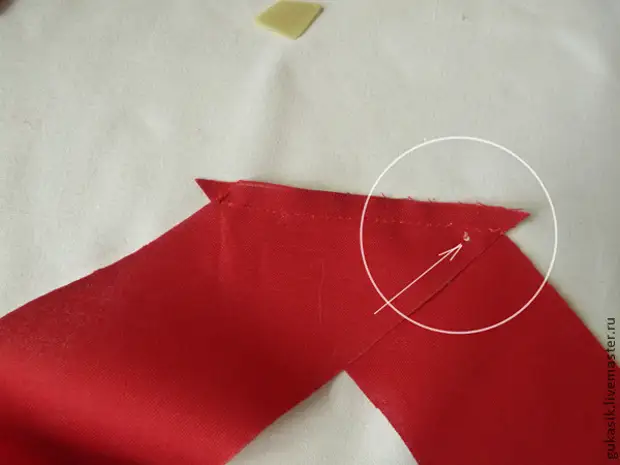
We finished with a typewriter.
Now go to irony works.
Look carefully - despite the newspaper, the machine slightly requested the fabric.
What is this term "requested"? This means that the fabric after the line is not quite smooth, but as it were a little wavy
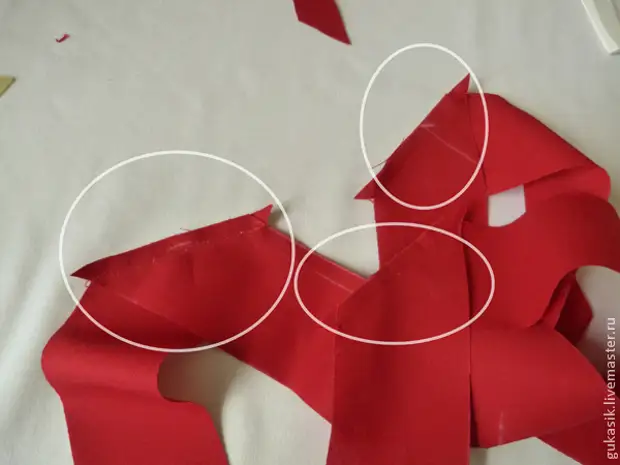
11) Therefore, we need to first come around the line.
What is this term "root"? This means that we are slightly moisturizing the fabric, with a small pressure spend the iron along the seam, until the fabric is completely drying.
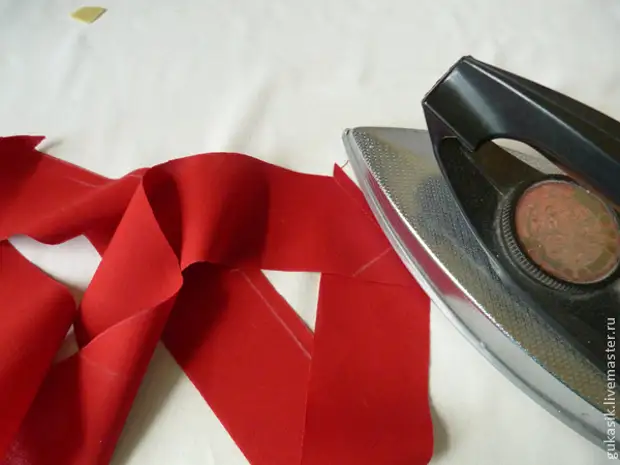
12) And only after it is triggered by our seam, carefully paint the beginning and the end of the line there, where the lines.
What is this term "trust"? This means that we are cutting into two sides, moisturize and irrigate to complete drying.
13) Cut extra, now already, corner.
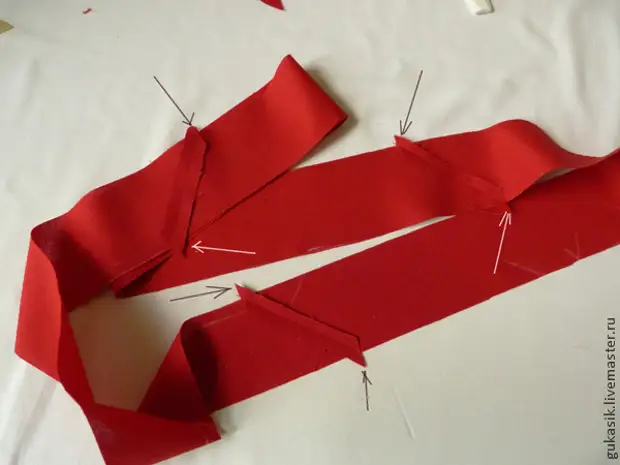
14) That's what happened.
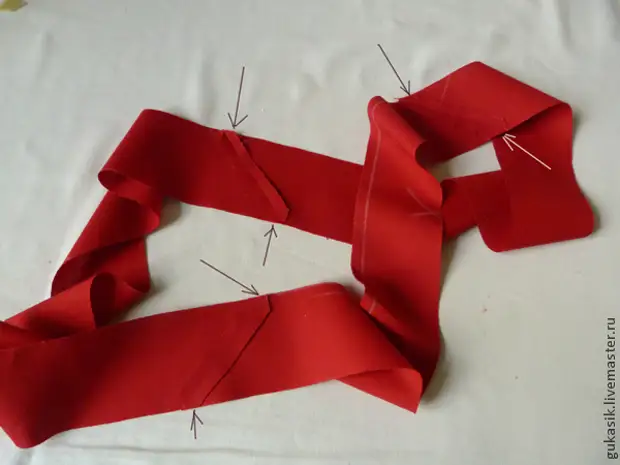
15) and the final stage. We need to fought strictly in half our faces.
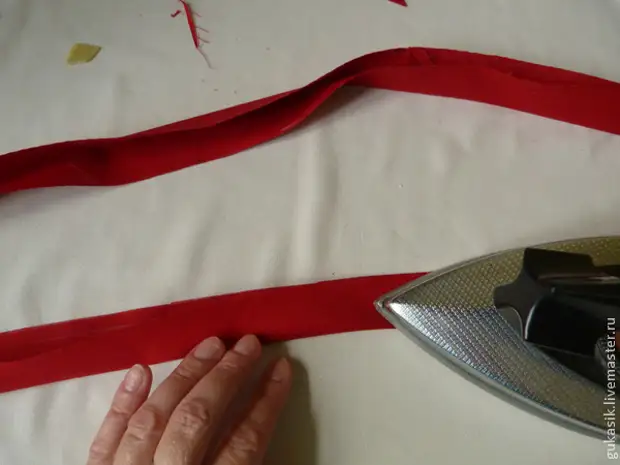
16) The finished beaker turned 3 cm wide, with a roll of 6 cm.
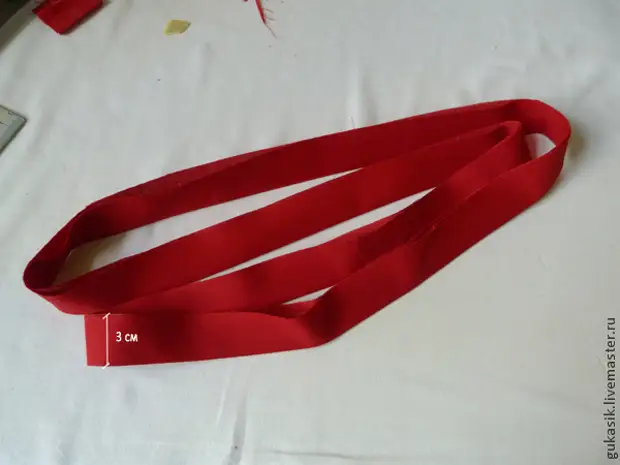
Now you can edit the sections of our product.
And I finished the organizer for the needlewoman with this baker.
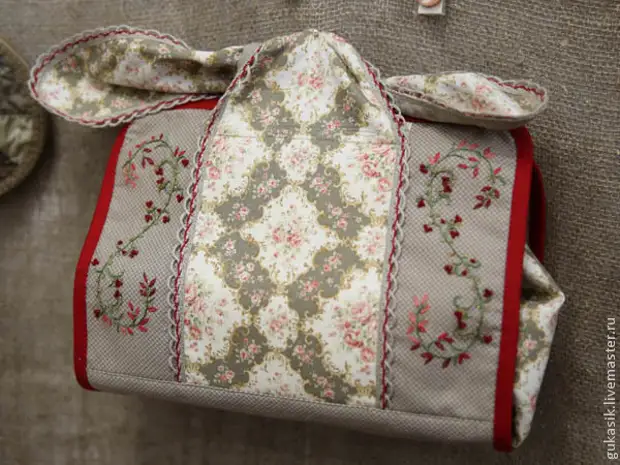
Such a baker can be edged with anything - clothes shitting or felted, bags, cosmetics, backpacks of blankets and blankets ..... and a lot more)
***************************
I hope that this master class will be useful for you and you have learned something new for yourself.
I am pleased to answer all your questions.
Success in creative work!
Ira Bortnik.
a source
